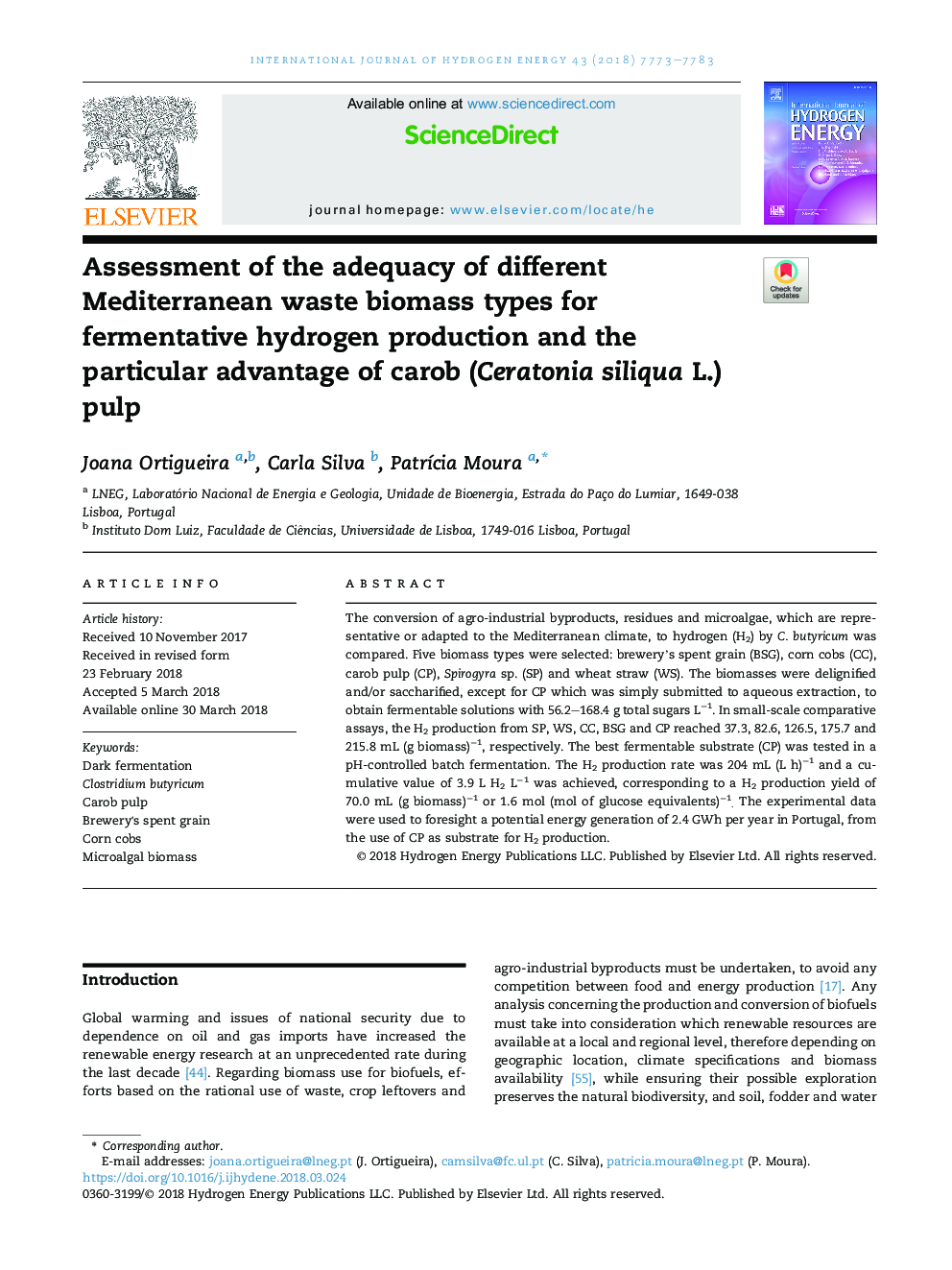| کد مقاله | کد نشریه | سال انتشار | مقاله انگلیسی | نسخه تمام متن |
|---|---|---|---|---|
| 7706350 | 1497309 | 2018 | 11 صفحه PDF | دانلود رایگان |
عنوان انگلیسی مقاله ISI
Assessment of the adequacy of different Mediterranean waste biomass types for fermentative hydrogen production and the particular advantage of carob (Ceratonia siliqua L.) pulp
دانلود مقاله + سفارش ترجمه
دانلود مقاله ISI انگلیسی
رایگان برای ایرانیان
کلمات کلیدی
موضوعات مرتبط
مهندسی و علوم پایه
شیمی
الکتروشیمی
پیش نمایش صفحه اول مقاله

چکیده انگلیسی
The conversion of agro-industrial byproducts, residues and microalgae, which are representative or adapted to the Mediterranean climate, to hydrogen (H2) by C. butyricum was compared. Five biomass types were selected: brewery's spent grain (BSG), corn cobs (CC), carob pulp (CP), Spirogyra sp. (SP) and wheat straw (WS). The biomasses were delignified and/or saccharified, except for CP which was simply submitted to aqueous extraction, to obtain fermentable solutions with 56.2-168.4 g total sugars Lâ1. In small-scale comparative assays, the H2 production from SP, WS, CC, BSG and CP reached 37.3, 82.6, 126.5, 175.7 and 215.8 mL (g biomass)â1, respectively. The best fermentable substrate (CP) was tested in a pH-controlled batch fermentation. The H2 production rate was 204 mL (L h)â1 and a cumulative value of 3.9 L H2 Lâ1 was achieved, corresponding to a H2 production yield of 70.0 mL (g biomass)â1 or 1.6 mol (mol of glucose equivalents)â1. The experimental data were used to foresight a potential energy generation of 2.4 GWh per year in Portugal, from the use of CP as substrate for H2 production.
ناشر
Database: Elsevier - ScienceDirect (ساینس دایرکت)
Journal: International Journal of Hydrogen Energy - Volume 43, Issue 16, 19 April 2018, Pages 7773-7783
Journal: International Journal of Hydrogen Energy - Volume 43, Issue 16, 19 April 2018, Pages 7773-7783
نویسندگان
Joana Ortigueira, Carla Silva, PatrÃcia Moura,